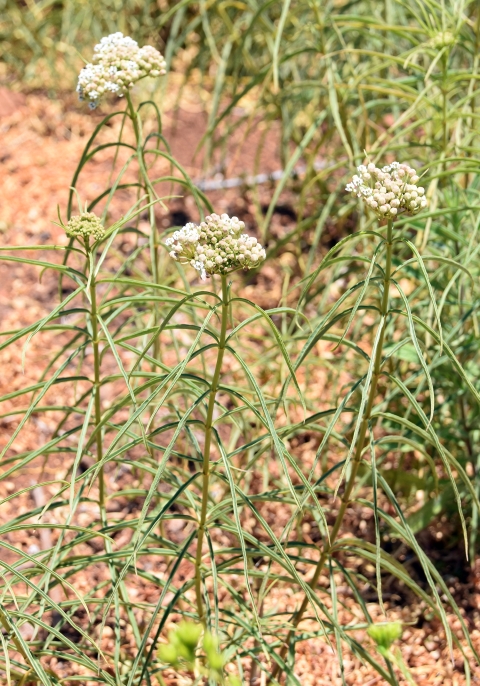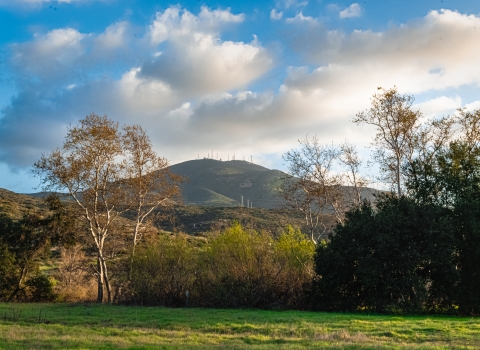Carolyn Read fields weekly phone calls with offers to take her property off her hands.
Just shy of 14 acres, Pepper Hill Farm is one of the oldest working farms in northern San Diego County. Read uses half of it to raise horses and boysenberries, while the other half remains native, home to quail, hawks, roadrunners, and the occasional rattlesnake, among other wildlife.
On either side of her farm are new housing developments. Read maintains the original house built on the property in 1882, one of the first homesteads in the San Marcos area.
She has chosen to not relocate her historic home as former neighbors have, or to sell off the land for expansion. It’s important to her to preserve the past and connect her property’s agricultural, natural and historical heritage to the future.
Read works hard to manage her farm, and met Jonathan Snapp-Cook, Carlsbad Fish and Wildlife Office biologist, in 2012 while embarking on a restoration project. Through the U.S. Fish and Wildlife Service’s Partners for Fish and Wildlife program, Snapp-Cook was able to provide funding, technical expertise and good old-fashioned elbow grease to help replace invasive plants with native coastal sage scrub.
“The Partners Program enables us to find and support private landowners who share ideals of protecting habitat and providing a place for plants and wildlife to live and thrive,” said Snapp-Cook. “When I met Carolyn, I could see how well she took care of the land and wildlife. She has a great attitude of preserving the past to share with generations to come.”
The sage scrub successfully took root, as did the friendship between Read and Snapp-Cook. The two have continued their working relationship for a decade now.
But Read always felt more could be done, and for years sought a way to forever protect the land from development. Her persistence paid off when she was accepted into the County of San Diego’s Purchase of Agricultural Conservation Easement (PACE) program, which promotes the county’s long-term preservation of agriculture.
Read was familiar with the PACE program, but wasn’t qualified to participate until 2021 when the county expanded its eligibility requirements and prioritized habitat value.
Farms provide a buffer between urban areas and also habitat for wildlife identified in the county’s Multiple Species Conservation Plan. The program compensates landowners for placing an easement on their property to conserve these areas.
“Application rankings are based a lot on the natural resources available on a property, and Carolyn’s property ranked second highest of all the applications received last year,” said Stephanie Neal, County of San Diego Land Use/Environmental Planner.
Neal grew up less than a mile from Read’s farm and fondly remembers walking around the area and seeing her horses.
“I have always been connected to nature, and it was so special growing up here,” said Neal. “Being able to help preserve this property was something I could have never imagined as a kid.”
Passersby now see a large sign designating Pepper Hill Farm a ‘Natural and Cultural Heritage Preserve.’ And on June 2, Snapp-Cook and Neal joined Read and her son, Warren Wilson, to formally recognize Read for her land stewardship.
The group shared stories about the journey to this momentous occasion against the backdrop of a rolling green hill dotted with milkweed and tarweed, a hawk foraging in the field.
“Jonathan’s commitment is unwavering, and through his determination and patience in explaining things, it’s clear he sees the end game,” said Wilson. “He has an appreciation for the same things my mom has appreciated for a very long time.”
Read, known as tenacious and bold, stood quietly as remarks were made. The depth of the moment reflected in her eyes.







